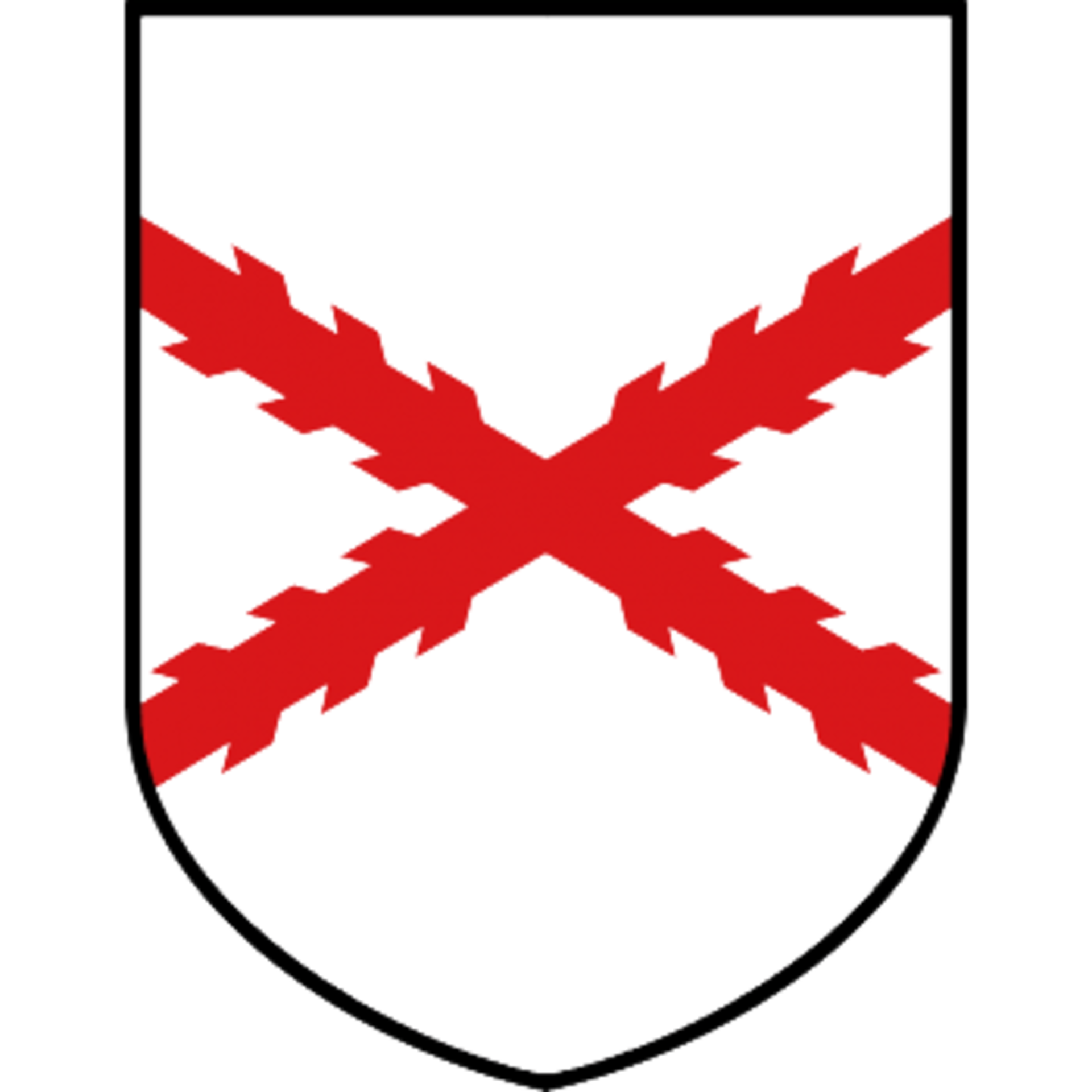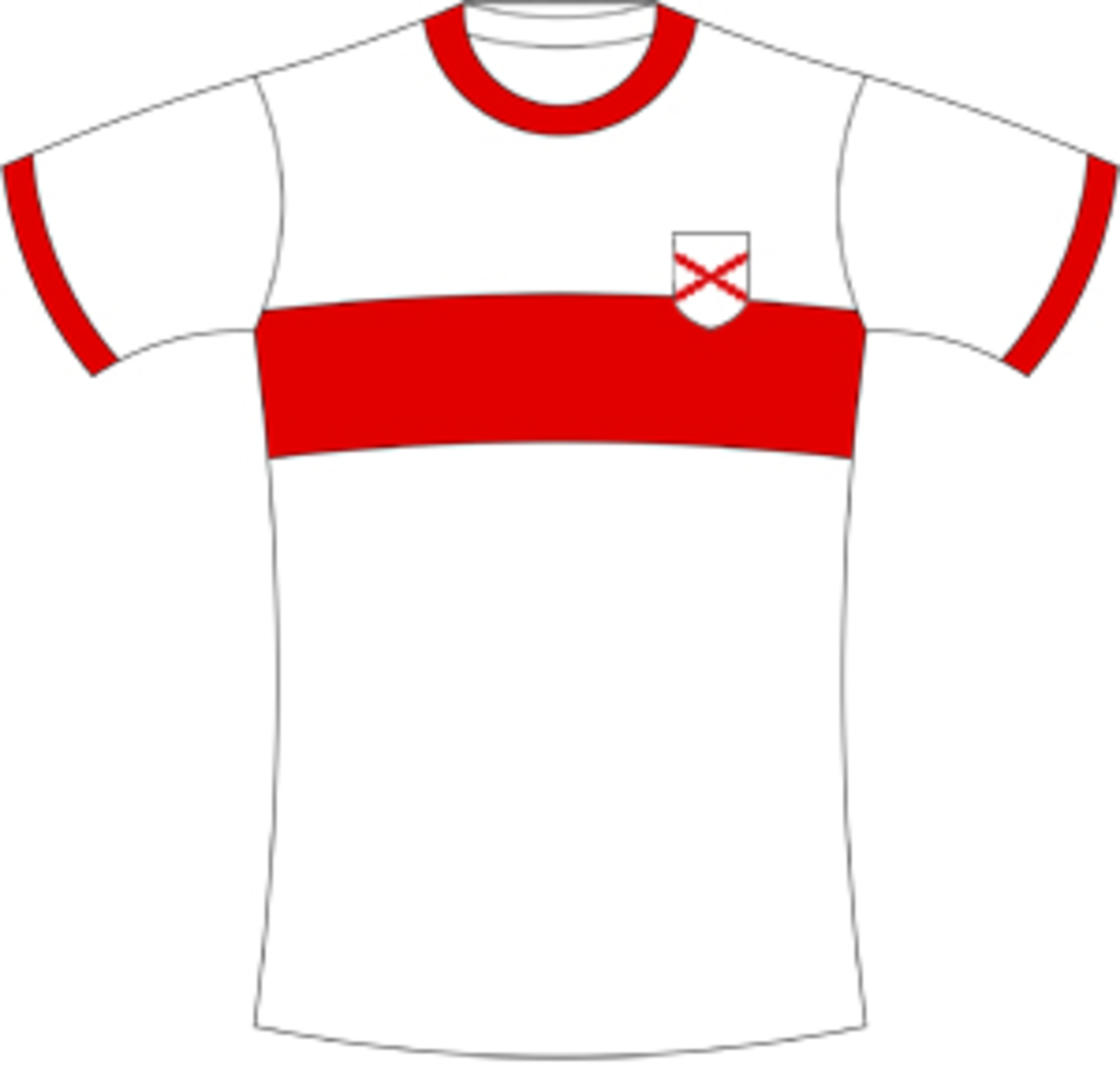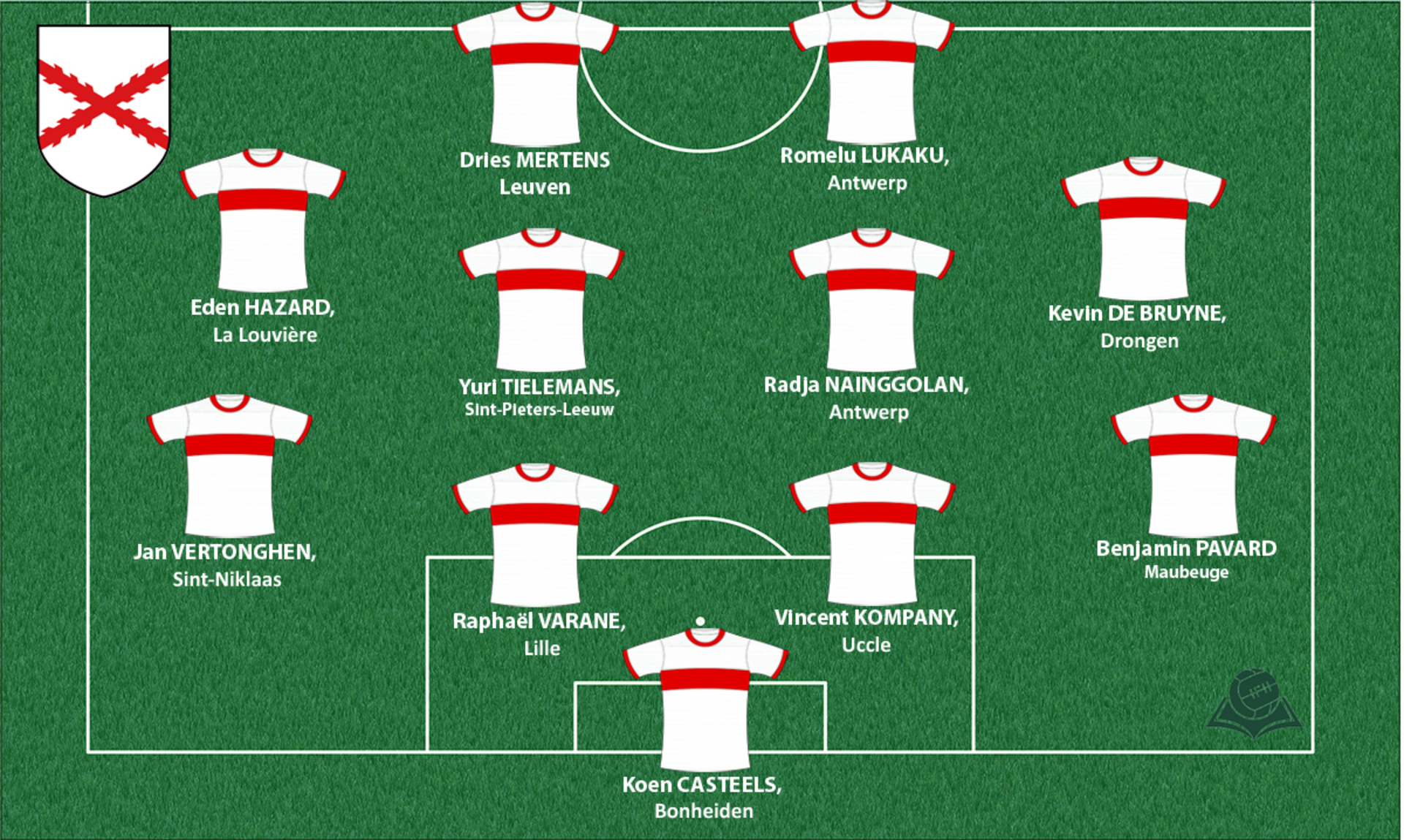Spanish Netherlands
Spanish Netherlands was the collective name of States of the Holy Roman Empire in the Low Countries, held in personal union by the Spanish Crown under the Habsburg reign from 1556 to 1714.

Coat of arms

Shirt
| Position | First name | Last name | Mjesto rođenja | Like | Dislike | |
|---|---|---|---|---|---|---|
| GK | Koen | CASTEELS | Bonheiden |
1 |
0 |
|
| GK | Matz | SELS | Lint |
0 |
0 |
|
| GK | Thomas | DIDILLON | Seclin |
0 |
0 |
|
| DC | Dedryck | BOYATA | Brussels |
0 |
0 |
|
| DC | Raphaël | VARANE | Lille |
12 |
1 |
|
| DC | Vincent | KOMPANY | Uccle |
15 |
0 |
|
| DRC | Toby | ALDERWEIRELD | Antwerp |
6 |
0 |
|
| DLC | Jan | VERTONGHEN | Saaint Niklaas |
12 |
2 |
|
| DLC | Timothee | KOLODZIEJCZAK | Avion |
0 |
0 |
|
| DR | Mathieu | DEBUCHY | Fretin |
0 |
0 |
|
| DR/MR | Thomas | MEUNIER | Saint Ode |
4 |
0 |
|
| DR/AMR | Thomas | FOKET | Brussels |
1 |
0 |
|
| DL/ML | Artur | MASUAKU | Lille |
0 |
0 |
|
| DRC/DMC | Benjamin | PAVARD | Maubeuge |
7 |
0 |
|
| DRC/DMC | Jason | DENAYER | Brussels |
2 |
0 |
|
| DMC | Youri | TIELEMANS | Sint-Pieters-Leeuw |
8 |
0 |
|
| MC | Mousa | DEMBELE | Wilrijk |
3 |
0 |
|
| MC | Nabil | BENTALEB | Lille |
1 |
0 |
|
| MC | Radja | NAINGGOLAN | Antwerp |
9 |
0 |
|
| MC | Yohan | CABAYE | Tourcoing |
1 |
1 |
|
| MC/SS | Marouane | FELLAINI | Brussels |
5 |
0 |
|
| MRLC | Dennis | PRAET | Leueven |
5 |
0 |
|
| AMRLC | Eden | HAZARD | Le Louviere |
20 |
1 |
|
| AMRLC | Kevin | DE BRUYNE | Drongen |
23 |
0 |
|
| AMRL | Yannick | CARRASCO | Bruxelles |
4 |
0 |
|
| FRLC | Alassane | PLEA | Lille |
0 |
0 |
|
| FRLC | Andre | AYEW | Seclin |
1 |
0 |
|
| FRLC | Divock | ORIGI | Ostend |
3 |
1 |
|
| FRLC | Dries | MERTENS | Leuven |
10 |
0 |
|
| FC | Michy | BATSHUAYI | Bruxelles |
8 |
2 |
|
| FC | Romelu | LUKAKU | Antwerp |
12 |
4 |
(Today part : mostly Belgium, smaller parts of France, Germany, Luxemburg, Netherlands)
The Habsburgs did not claim victory in the Eighty Years War, which eventually ended with the independence of the northern Protestant provinces, while power was only preserved in the southern Catholic provinces or the so-called Spanish Netherlands. Terror and massacres, multiple purges and forced relocations had devastating economic and social effects, but accompanied by intense Catholic propaganda, achieved the desired result of eradicating Protestantism in the southern provinces. Thus, the Spanish Netherlands found its own cultural identity, which in the future protected against the possible merger or association with the northern provinces, which at that moment created from it a model and an important stronghold for the project of re-Catholic conquest of Europe.
Spain's biggest problem was that its Empire extended to all four corners of the globe, so defending communication channels became an obsession, and at the same time a motive for simultaneous intervention on multiple fronts. It is precisely the strategy of keeping the "Spanish Way" (Genoa, Milan, Savoy, Frenche Comte, Lotaringia, the Netherlands) open to people and goods, weakening Spain, implicating it in continental politics. It will also be broken into conflict with France in the context of the Thirty Years' War. As the power of the Spanish Habsburgs weakened in the second half of the 17th century, France, especially during the reign of Louis XIV, seized the areas of Artois, Cambrai, parts of Hainat and Flanders around Lille with numerous wars. The remainder, however, would remain under the control of the Spanish Habsburgs until the end of the War on Spanish Heritage (1714), when it, in comparison with the previous century, passed into the hands of the Austrian Habsburgs.
Sources
- Grupa autora, Povijest: Doba apsolutizma (17. stoljeće), knjiga X., Zagreb 2008.
- ''Spanish Netherlands'', https://en.wikipedia.org/wiki/Spanish_Netherlands
- Coat of arms: http://www.williammarshalstore.com/ile-de-france-and-surrounding-areas-apparel/406-cross-of-burgundy-coat-of-arms-shirt.html
